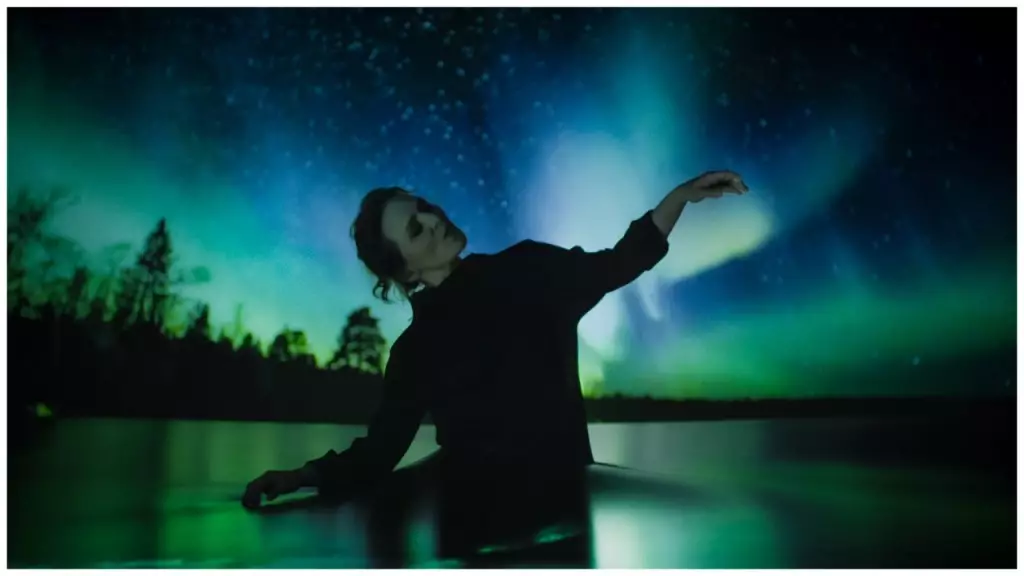In an era dominated by instantaneous communication, the art of letter-writing has largely faded into obscurity. This cultural shift serves as the backdrop for the experimental biopic centered around Miss Geraldine Flower, an elusive figure whose life and musings are brought to the forefront in this unique cinematic experience. Inspired by an archive of personal artifacts—including letters, photographs, and telexes—left behind by Flower after her premature passing, the film crafts a rich tapestry of sound and imagery in a manner reminiscent of modern art. Directed by Iain Forsyth and Jane Pollard, the duo previously known for their innovative documentary on Nick Cave, the film offers an intriguing exploration that combines music, visual artistry, and storytelling.
At its core, this film is not just a retelling of Flower’s life; it operates more as a sonic canvas where emotions and memories are expressed through music and performance. Icelandic singer Emilíana Torrini takes the helm, her voice weaving through the narrative like a thread connecting the past to the present. The melody becomes the medium through which the viewer engages with Flower’s life, as Torrini’s lyrics evoke deep emotional currents, creating an atmosphere where reflection and revelation coexist. While some might question the accessibility of Torrini’s abstract lyrical style, one can argue that it enriches the viewing experience, inviting audiences to ponder the meaning beneath the surface.
The film articulates a longing for human connection that is most poignantly captured through its framing device—Flower, portrayed by Caroline Katz, sits contemplatively in a timeless café, engaging in a dialogue with Torrini. This interplay between performer and subject offers insight into Flower’s character and her relationship with language, inviting the audience to explore the complexities of identity and memory. The film’s narrator, Sophie Ellis-Bextor, sets a reflective tone in the opening scenes, asserting that letters encapsulate our essence and aspirations. In this way, the viewer is invited to consider how personal correspondences can serve as vessels of identity, revealing the hidden layers of an individual’s life story.
While audiences are gradually introduced to Flower’s biographical details—such as her birth in 1947 to an Australian and Irish heritage and her subsequent migration to London—the film masterfully creates an air of mystery that captivates rather than disorients. With references to espionage and potential hidden meanings within the letters, the narrative becomes an intricate puzzle. Are these mere love letters, or do they conceal deeper, coded messages? This enigma beckons viewers into a realm of interpretation where ambiguity reigns supreme, compelling a heightened engagement with the material presented.
Incorporating mesmerizing choreography by Kate Coyne adds another layer of surrealism to the film. The movements perform as a visual counterpart to Torrini’s haunting melodies, establishing a multisensory experience that feels otherworldly. It is a jarring yet harmonious juxtaposition that appeals not only to the brain but also to the senses, creating an immersive exploration of a life that, while steeped in quotidian details, is ultimately shrouded in mystery.
Though the film runs for a little under 90 minutes, its contemplative pacing fosters a significant engagement with its themes. By sidestepping the conventional biopic format, it cultivates a niche that will likely resonate with viewers who appreciate avant-garde storytelling. With its blend of biography, music, and art, the film promises to carve out a space within a devoted cult following, much like its creator’s previous works.
Miss Geraldine Flower’s story unfolds brilliantly through a kaleidoscope of sound, imagery, and metaphor. By exploring the nuances of her life within the framework of forgotten communication methods, this experimental biopic invites us to reflect on our connections and the stories we leave behind, crafting an intoxicating narrative that both enchants and mystifies.


Leave a Reply